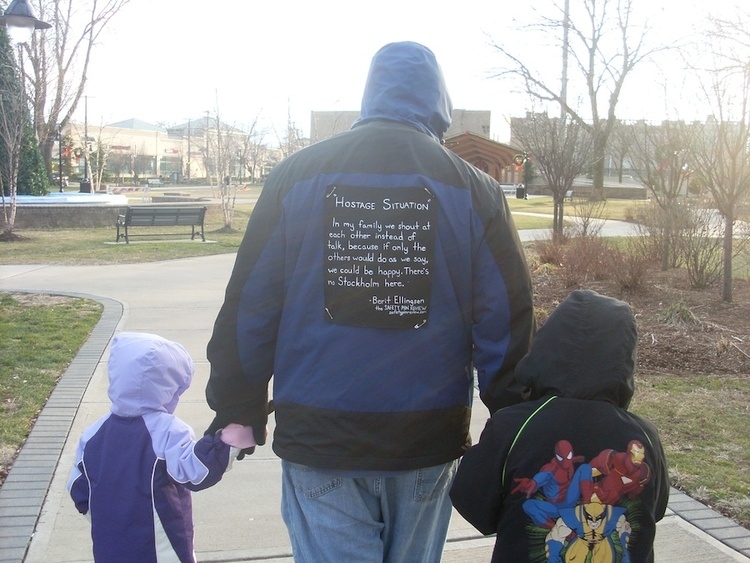
“It seems absurd, to be trapped inside a volcano. But here we are.” Such are the surreal worlds Simon Jacobs so casually places readers. When I first met Simon, we were both interns at FSG, chatting between sad desk lunches about vegetarianism and how the water there sometimes tasted like spiders. The 22-year-old from Ohio has a way of enchanting readers with an ominous yet tender tone that’s sure to woo anyone who picks up his new collection Saturn, a series of 19 stories that feature David Bowie. That’s right, DAVID FUCKING BOWIE.
Before Saturn, Simon’s short fiction made its home across the Internet ― in PANK, Paper Darts and Necessary Fiction, to name a few. In 2011, Simon also founded Safety Pin Review, which publishes 30-word flash fiction stories, declaring: “We Want to Wear Your Fiction.” Each piece is transcribed onto patches and assigned to various “operatives” to wear for the public’s reading pleasure. It’s punk publishing at its finest.
I met with Simon at Hummus and Pita Co. (one of our favorite lunch spots from our time at FSG) to discuss Saturn and what it takes to make fiction fashionable.
Freddie Moore: How did Safety Pin Review begin? Where did the idea of "wearing your fiction" come from? There's something old school punk about it.
Simon Jacobs: That’s pretty much it! The idea first came to me when I was in college in 2011 and was in the midst of studding a leather jacket I’d inherited from a friend. Of course, if you want to have a super-punk jacket, you need to have a super-punk back patch, but most of the traditional punk-ish patches didn’t really interest me, so I figured I’d have to do the job myself.
At the time, I was becoming aware of all kinds of short fiction on the Internet, which also seemed very D.I.Y. and punk to me. These literary magazines and micropresses were built completely independently, with work by people like xTx and Brandi Wells, who were playing with the form and writing fiction in a tone like I’d never read before. ... So, given these two lines of thought, I came up with the idea of presenting fiction in back-patch form. The safety pins are burgled directly from ‘70s punk fashion, and until I got volunteers to start wearing the stories, I wore them all myself, on my freshly studded leather jacket, naturally.

How do you select stories for Safety Pin Review? What catches your eye, sings to you?
The nature of the project is that it inspires a certain tone, because when you see someone wearing these stories on the street, there’s always an element of self reflection about it, you know? Because they’re basically glorified “kick me” signs. So you have the opportunity to address the reader or to implicate the reader in some way like that. I tend to respond best to stories that are kind of playful in their tone or assertive.
Is it to inspire a conversation?
Yeah, kind of. I like the idea that the person reading it would feel implicated by the story in some way ― and also, just the fact that someone has chosen to wear it around with them everywhere they go is kind of a statement in itself. A lot of people will agree to wear a story before they know what it is, so I enjoy stories that can be appreciated in different contexts depending on where they’re worn. For example, one guy wore this story called “Hostage Situation,” and it was about a family basically in the throes of … well, it used family as a metaphor for Stockholm Syndrome. He was wearing it around all the time, including dropping his kids off at school and stuff like that. It was this very strange “family is like a prison” story, and he’s dropping his kids off with fellow parents staring him down…. That was a really satisfying moment that I helped orchestrate, this weird combination of things.

How do you enlist your volunteers to wear the patches?
I get people who volunteer, which is great. I always love volunteers. (Any readers of this interview should feel welcome to volunteer!) So it’s a lot of volunteers and other people that I approach, either out of the blue or … whenever I accept a story from a writer, I ask if they would like to be an operative as well, and usually people are pretty enthusiastic about it. That’s one of the reasons I think this is a cool project, because you can involve a lot of people at different steps of the process. You can write a story, but you can also wear a story or you can be one of the people who takes pictures of people wearing the stories.

